There is so much that is unknown, controversial or debated about the life of Anne Boleyn that once she captures our imagination, and heart, there is no escaping her. It’s the mystery that I believe fuels the fire. The need to ‘know’ Anne as best we can, to discover what she looked like, to understand her decisions, her actions and the world, the very different world, in which she lived.
And we must never forget that very important fact, she once lived. It might seem like a silly thing to say but I think at times we read so much about historical figures that they cease ever having been a living, breathing and thinking human being and instead become a character in a book, a modern person dressed in fancy costume.
Anne was a Tudor woman. An intelligent, determined, charismatic, witty, courageous Tudor woman who after almost 500 years still has the ability to provoke such strong feelings and emotions and the ability to polarize people.
I hope she never ceases to be a person of immense interest and inspiration because although Henry attempted to delete her from history, we must keep her alive.
Let’s now look a major turning point in Anne’s life story – her marriage to King Henry VIII.
A Timeline of Events
1st September 1532
Anne Boleyn receives the title of marquis of Pembroke
Around 1st October 1532
Thomas Cranmer is recalled from Germany. Henry sends a special messenger to ‘hasten his return’ (Ives, Pg. 163).
October-November 1532
Henry and Anne travel to Calais to meet Francis I. Anne spends her time in Calais living like a queen in all but name.
October-November 1532
Most historians agree that at some point either on the return leg of the Calais journey or during their travels from Dover to Eltham, Anne slept with Henry.
November 14 1532
Edward Hall reports that Henry and Anne were secretly married on this day.
Henry and Anne land at Dover and the chronicler, Edward Hall writes, ‘the king after his return married privily the Lady Anne Boleyn….which marriage was kept so secret that very few knew it.’ (Starkey, Pg. 463)
January 1533
Applicants for places in Anne’s household are advised that they won’t need to wait much longer.
January 24 1533
The news that a Boleyn protégé would be the next archbishop of Canterbury circulates around court.
January 25 1533
Henry and Anne’s secret wedding ceremony probably took place on this day. David Starkey believes this was their second secret wedding. According to Eric Ives it was around this time that Anne may have also begun to suspect that she might be pregnant.
January 26 1533
Thomas Audley is promoted to the rank of chancellor.
February 7 1533
Anne Boleyn’s father, the earl of Wiltshire, tells the earl of Rutland that the king is ‘determined to marry Anne at once’. (Ives, Pg. 163)
February 1533
Chapuys, who had been kept in the dark about the wedding, reports that Henry had been formally betrothed.
February 15 1533
Anne begins dropping hints around court about her pregnancy and on the 15th Chapuys reports that Anne told the duke of Norfolk that if she wasn’t pregnant by Easter she would undertake a pilgrimage to pray to the Virgin Mary (Ives, Pg. 163).
February 24 1533
Anne and Henry hold a great banquet at Whitehall Palace where Henry doted on Anne and ignored many of his important guests. Alison Weir describes how by the end of the night Henry was drunk and very merry and the Duchess of Norfolk heard Henry refer to Anne’s ‘great dowry and rich marriage’. (Pg. 242) Henry was referring to all the sumptuous furnishings and gold plate that now belonged to Anne.
Late February 1533
In the presence of many courtiers, Anne is heard to tell one of her favourites, probably Wyatt, ‘that she has developed a craving for apples, which the king said was a sign that she was pregnant but which she had denied – clearly in jest, for she went back to her room laughing loudly.’ (Ives, Pg. 163)
March 1533
Montmorency, the grand maitre of the French royal household, is still addressing Anne as Madame la marquise.
March 13 1533
Anne’s brother Rochford is sent to France with a secret message for Francis I (Weir, Pg. 243).
March 14 1533
Cranmer introduces the Appeals bill in the Commons.
March 30 1533
The new archbishop is consecrated.
March 31 1533
Chapuys is still only passing on rumours of a marriage and speculating that it would take place after Easter.
End of March
Anne’s household is formed.
April 7 1533
Rochford returns to England and King Henry VIII summons his council and informs them that he has married Anne and that she is pregnant with the heir to England (Weir, Pg. 242).
April 9 1533
Norfolk and Suffolk go to Katherine of Aragon at Ampthill to tell her that the king is married and that she should abstain from the title of Queen and should instead be referred to as Princess Dowager of Wales.
April 12 1533 (Eve of Easter Day)
Anne Boleyn attends mass as queen.
April 12 1533
Carlo Capello from Venice reports that Henry has already been married for several months.
“Told in this way, the months before Easter 1533 marched with an ever increasing tempo towards the inevitable climax of the long years of courtship.” (Ives, Pg. 164)
Anne Boleyn was elevated to the title of marquis of Pembroke to prepare her for the European stage. She spent her time in Calais with Henry living like a queen and on her return felt secure enough to consummate her relationship with Henry.
Edward Hall reports that Henry and Anne married on St. Erconwald’s Day (November 14) in a private and secret ceremony. David Starkey agrees that the time ‘was psychologically right’ (Pg. 463).
“Anne had lived with Henry in Calais openly as his consort. She had behaved and been treated as his Queen. And she had been given Francis’s blessing. To have gone back to England and chastity must have seemed intolerable – both to her and to Henry. But equally Anne was not the woman to surrender without a marriage. Not even the promise of marriage would have done. Instead, there must have been the thing itself, with a priest, a ring and the exchange of vows.” (Starkey, Pg. 463)
I have to agree with Starkey. It is hard to believe that Anne, after six years of waiting, would have consummated her relationship if she was not completely convinced that she would become Henry’s wife and queen.
Eric Ives, on the other hand, believes that November 14 was when Henry and Anne made some formal commitment but he thinks it was unlikely to have been a formal marriage. He does though specify that for Henry and Anne ‘to abandon years of self-denial’ their commitment must have been sufficient to stand up in canon law.
Later Protestants promoted the November date in order to protect Elizabeth I reputation (born on the 7th September 1533). But what I find particularly interesting is that Nicholas Sander, an Elizabethan recusant activist who spoke terribly of Anne, also dates the marriage as 14 November 1532. He most definitely would not have been trying to protect Elizabeth’s reputation.
So whether you believe November saw a formal commitment or a formal marriage the truth of the matter is that Anne Boleyn was sure that she was Henry’s wife and on her way to becoming Queen of England.
So what of the secret ceremony held on the 25 of January 1533?
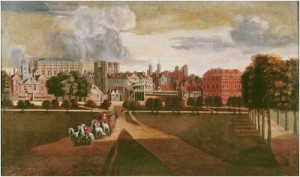
The Old Palace of Whitehall c. 1675. The four-towered building left of centre is the palace gatehouse, the Holbein Gate.
The ceremony took place just before dawn ‘in the upper chamber over the Holbein Gate at Whitehall’ (Starkey, Pg. 6) in the presence of four or five witnesses. Weir states that the witnesses included Henry Norris, Thomas Heneage, Anne Savage, later Lady Berkeley and possibly William Brereton (Pg.241).
At each of Henry’s marriage ceremonies the King would have sworn:
‘I, Henry, take thee to my wedded wife, to have and to hold from this day forward, for better or for worse, for richer for poorer, in sickness and in health, till death us do part, and thereto I plight thee my troth.’ (Starkey, Pg. 6)
To which the Queens, including Anne, replied. ‘I take thee, Henry, to my wedded husband’ continuing to make the same oath as the King with the additional promise of being ‘bonny and buxom in bed and board’ (Starkey, Pg. 6).
Henry would have responded to this by putting on the Queen’s wedding ring.
The priest was either Dr Rowland Lee, a royal chaplain, or, according to Chapuys, Dr George Brown, Prior of the Austin Friars in London. Both Starkey and Weir agree that the most likely candidate was Dr Rowland Lee, as he became the Bishop of Coventry and Lichfield in 1534 (Starkey, Pg. 474).
According to Nicholas Harpsfield in his Treatise on the Pretended Divorce between Henry VIII and Catherine of Aragon written in Queen Mary’s reign, prior to the wedding ceremony, Henry informed Lee that he had ‘gotten of the Pope a licence to marry another wife’ but ‘to avoid business and tumult’ the King felt the ceremony should be performed in secret (Starkey, Pg. 476).
The story goes that when the party gathered for the ‘secret’ wedding Lee became very concerned because Henry had not produced the necessary documentation. He continued to press the King and demanded that the licence be read, to which Henry responded that the licence was ‘in another surer place whereunto no man resorteth but myself’. Henry went on to say that if he went to collect the licence now, so early in the morning, the wedding would no longer be ‘secret’. He then commanded Lee to ‘Go forth in God’s name, and do that which appertaineth to you! (Starkey, Pg. 476).
The story though doesn’t end here, for Dr Rowland Lee was an intimate friend of Cromwell, ‘ a shrewd and efficient administrator and, when necessary, as accomplished a bully as the great minister himself’ (Starkey, Pg. 476). He was nothing like the ‘dithering, anxious’ Lee of Harpsfield’s account. On the contrary, later in 1533 he forced the Northern Convocation to accept the divorce and compelled the Welsh Marchers to submit to law and order when he was president of the Council of Wales (Starkey, Pg. 476).
So David Starkey poses two very interesting question, was Dr Rowland Lee acting? And how sincere was Henry?
Starkey sums it up well in the following statement:
“The answer, surely, is that the whole ceremony was a carefully contrived performance. The first marriage in November had been designed to reassure Anne. The second, with its half-invocation of Papal authority, was intended to reassure Henry’s subjects. When news of it leaked, which it quickly did, it would suggest that Henry had received the nod from Rome.” (Starkey, Pg. 476)
Those that attended the private ceremony were sworn to secrecy but for how long did it remain a secret? Ives states that Chapuys was ‘kept entirely in the dark’ (Pg. 162) and by the end of March was still only reporting about rumours of Henry’s upcoming marriage.
Where as Starkey on the other hand, states that news of the ‘secret’ marriage leaked and within the month ‘Chapuys was confidentially informed that the marriage had taken place’ (Pg. 474).
Whether or not the news of the wedding circulated quickly or not, the clues to suggest that a formal marriage ceremony had taken place were definitely present.
On the 24 of February, Anne Boleyn entertained the king in her own rooms at Whitehall Palace where Anne showed off her luxurious tapestries, furnishings and masses of gold plate that she’d recently acquired from the King. It was during this occasion that Henry was heard to ask the dowager duchess of Norfolk whether she thought Anne had made a good marriage and had a great dowry, ‘since all the furnishings and all the plate belonged to her’ (Ives, Pg. 164).
The news of Anne’s pregnancy became generally known within the court (Ives, Pg. 163) more than likely due to Anne not being able to resist from hinting at her delicate state.
According to Chapuys, Anne told Thomas Wyatt, in front of a crowd of people, that she had
“an inestimable wild desire to eat apples, such as she has never had in her life before, and the King had told her it was a sign she was with child, but she had said it was nothing of the sort. Then she burst out laughing loudly.” (Weir, Pg. 241)
In the same month, Anne tells the duke of Norfolk that if she wasn’t pregnant by Easter she would undertake a pilgrimage to pray to the Virgin Mary (Ives, Pg. 163).
Anne Boleyn was finally Queen and soon to be mother of Henry’s longed for son and heir to the throne of England.
She must have felt elated and now undeniably ‘The Moost Happi’. But was she?
How was the news of the King’s marriage to Anne Boleyn received?
The news was not received well at all.
The general consensus was that the king’s marriage to Anne would spell disaster for Anglo-Flemish trade and the people feared that England would now have to go to war with the Emperor.
In April there was a large number of public protests against the marriage and on one particular occasion a priest, Ralph Wendon, was reprimanded for saying that Anne was ‘the scandal of Christendom, a whore and a harlot’ (Weir, Pg. 246).
According to Alison Weir, when at the end of April ‘the order went out that Queen Anne was to be prayed for in churches, one London congregation walked out in disgust’ (Pg. 246). The Lord Mayor was later reprimanded for this act.
Some people were imprisoned for slandering the new Queen including Margaret Chancellor who was imprisoned after crying out ‘God save Queen Katherine! She didn’t stop there though; she also called Anne ‘a goggle-eyed whore’ (Weir, Pg. 247).
Unfortunately for Henry and Anne, news of the marriage was received with about as much enthusiasm abroad as it was at home.
The Emperor made it very clear that he would not recognise Anne Boleyn as Queen of England, nor would he accept Cranmer’s judgement on Henry and Katherine’s marriage.
Despite the Emperor’s efforts, on the 28th May 1533, Archbishop Cranmer judged Henry VIII and Anne Boleyn’s marriage good and valid.
Anne Boleyn was now, in the eyes of the law, Henry’s wife and Queen and the child safely tucked in her womb – legitimate heir to the throne of England.
References
Ives, E. The Life and Death of Anne Boleyn, 2004.
Starkey, D. Six Wives: The Queens of Henry VIII, 2003.
Weir, A. The Six Wives of Henry VIII, 2007.
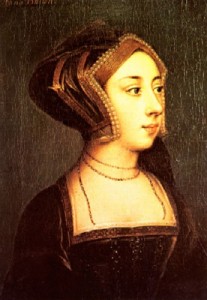
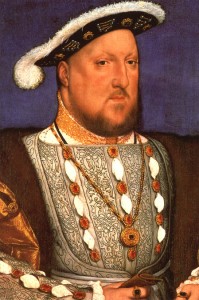
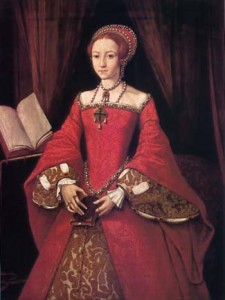
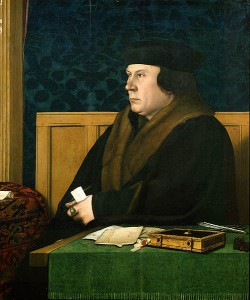
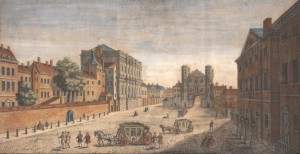
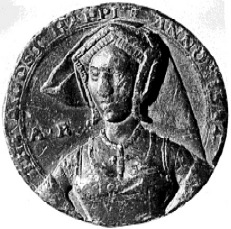
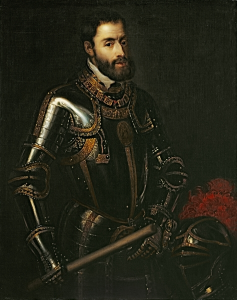
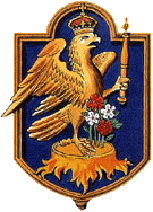















Thanks for a great article–Anne continues to fascinate–I never tire of reading about her, always searching for something new, something that might explain the mystery about her a little more. The mystery and the tragedy of her life will always intrigue us. I explore a lot of this in AT THE MERCY OF THE QUEEN, which will be released in early 2012 from St. Martin’s Press. My ancestor, Lady Margaret Shelton, is whose story I tell but her story is intimately linked with Anne’s as they were first cousins and Pretty Madge was one of Henry’s mistresses for a short while–we don’t know if that relationship was consummated or not. And now, I’m at work on one about Lady Mary Shelton, another cousin of Elizabeth’s who holds the same fascination for me as her mother. I LOVE this site and thanks again. I keep wanting to learn more and more!
Can’t wait Anne!!
Me too i was trying to fine out about her wedding ring i am loving history now.
I can’t even begin to tell you how much I’ve loved reading these articles here and on Anne Boleyn Forum about these key dates in Anne’s life. One looks at the timeline and can’t help to marvel at these events — one after another — in late 1532 and on into 1533 as everything she wanted seemed to be in her grasp. All that was left was for her to give birth to the promised son. It’s said that all little girls dream of becoming princesses, but then reality sets in. This is the story of a girl who was so “insignificant” at the time of her birth that we don’t even know what year she was born, but a girl who got to spend her formative years in the courts of Marguerite de Navarre and Queen Claude, and then grew up to actually become Queen of England. It’s too bad that there wasn’t a typical “and they lived happily ever after” conclusion, but then, who knows what history might have been if all had gone exactly as Anne and Henry desired. It’s no wonder this woman continues to fascinate us nearly 478 years after her death.
Thanks for yet another wonderful read!
Thank you so much for your lovely comment! I am so glad you are enjoying my articles, I plan on bringing you lots more!
The comments about Anne at the beginning or the article are so true, once she gets into your mind and heart she stays, she is a fascinating historical character, whether you love or hate her! I believe she was a woman very much before her time and would have been more at home and tolerated in the 20th century. I cant get enough of her and the whole tudor dynasty and thankyou for the chance to read and discover more.
Thanks Natalie for all your hard work. It astounds me that Anne kept such a dangerous man interested in her for all those years before consummation. Henry was certainly a hunter and a killer.
Good evening Mrs Grueninger,
It’s a pleasure to send you from France this comment on your very interesting website about Anne Boleyn.In my small village in Brittanny on board of Loire,we have in the church(1525)a big window of 1535 with François Ier,Charles Quint and an other who will be Henri VIII (a dragoon in his helmet,The Order of the Garter on his left leg and a buckler with a lion or a leopard).Could i send you any pictures of this window and to have your opinion about it.
I live actualy since 23 years with my wife and sons in the North of France near Boulogne sur Mer and the Camp du Drap d’Or and i work in Calais.
Sincerily
Bonjour Bourget! I’d love to see your photos, please email them to me at natalie@onthetudortrial.com. Thank you!
Mrs Grueninger,
Could you say me please if you have well receipted my photos?
Thank you
Dimitri
Hello Dimitri, no, unfortunately I didn’t receive them. Perhaps try sending them again? Thank you!
Thank you Natalie for your response,i think it’s better for me to send you this photos at your postal adress in Australia.About your mail you give me”natalie@onthetudortrial.com” ,it’s impossible for me to send my mail(?).So,i wrote “natalie@onthetudortrail.com”,the mail was sended but it was no good for you.
Thank you again!
Hi Dimitri, if you let me know your email I’ll send you a quick message and that way you can respond to that. Thank you!
Good morning ,
My email is dimibgt@free.fr
Thanks a lot